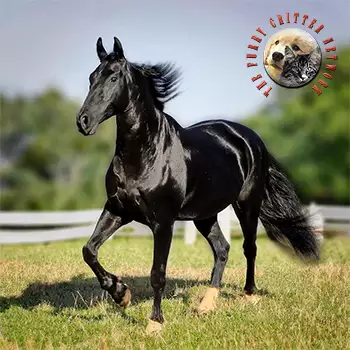General Description
In 1935, admirers and breeders of this unique horse, met to form the Tennessee Walking Horse Breeders' Association of America. The purpose of this association was to collect, record and preserve the pedigrees of the Tennessee Walking Horse, to maintain a registry, develop rules and regulations governing all aspects of Tennessee Walking Horses, and to sponsor programs promoting this breed. Lewisburg, Tennessee, USA, the home of the first meeting was chosen as the official headquarters for this new breed.
The Tennessee Walking Horse stud book was closed in 1947, meaning that from 1948 forward to be registered as a Tennessee Walking Horse, both parents must also be so registered. The Tennessee Walking Horse was officially recognized as a distinct breed of light horse by the United States Department of Agriculture in 1950. In 1974 the registry's official name was expanded to the Tennessee Walking Horse Breeders' and Exhibitors' Association.
The TWHBEA entered the 1990s committed to promoting the Tennessee Walking Horse to the world. With approximately 300,000 horses registered and Association membership approaching 19,000, the Tennessee Walking Horse has firmly established itself as one of the top ten recognized horse breeds in the U. S., and has earned the distinction as the fastest growing breed.
The Tennessee Walking Horse generally ranges from 14.3 to 17 hands and weighs 900 to 1200 pounds. The modern Tennessee Walking Horse possesses a pretty head with small well placed ears. The horse has a long sloping shoulder, a long sloping hip, a fairly short back and short, strong coupling. The bottom line is longer than the top line, allowing for a long stride.
Tennessee Walking Horses come in all colors and a variety of patterns. The diverse color choices are sure to please any horse enthusiast. Different colors are not discriminated against.
The Tennessee Walking Horse performs three distinct gaits: the flat foot walk, running walk and canter. These three are the gaits that the Tennessee Walking Horse is famous, with the running walk being an inherited, natural gait unique to this breed.
Gaits: The Tennessee Walking Horse performs the flat foot walk, running walk, and canter. These three are the gaits for which the Tennessee Walking Horse is famous, with the running walk being an inherited natural gait unique to this breed. Many Tennessee Walking Horses are able to perform the rack, stepping pace, fox-trot, single-foot and other variations of the famous running walk, while this is not desirable in the show ring the above mentioned gaits are smooth easy trail riding gaits.
The flat foot walk is a brisk, long-reaching walk that can cover from 4 to 8 miles an hour. This is a four cornered gait with each of the horse's feet hitting the ground separately at regular intervals. The horse will glide over the track left by the front foot with his hind foot (right rear over right front, left rear over left front). The action of the back foot slipping over the front track is known as overstride. Overstride is unique to the walking horse breed. The hock should show only forward motion, with vertical hock action being highly undesirable. A Tennessee Walking Horse will nod its head in rhythm with the cadence of its feet. This nodding head motion, with the overstride, are two features that are unique to the Tennessee Walking Horse.
The running walk is the gait for which the walking horse is most noted! This extra-smooth gliding gait is basically the same as the flat walk with a marked increase in speed. This breed can travel 10 to 20 miles per hour at this gait. As the speed is increased, the horse over-steps the front track with the back foot by from 6 to 18 inches. The more "stride" the horse has the better "walker" it is considered to be, for this gives the rider a feeling that he or she were gliding through the air as if propelled by some powerful but smooth-running machine. Walking horses relax certain muscles while doing the running-walk, some nod their heads in rhythmic timing, swing their ears in perfect motion, and some even snap their teeth. The running walk is a smooth, easy gait for both horse and rider. The running walk is basically the same gait as the flat walk with an increase in speed. There should be a noticeable difference in the rate of speed between the flat walk and the running walk but a good running walk should never allow proper form to be sacrificed for excessive speed. A true Tennessee Walking Horse will continue to nod while performing the running walk.
The third gait is the canter, which is a collected gallop. The canter is performed in much the same way as other breeds, but the walking horse seems to have a more relaxed way of performing this gait. The canter is a forward movement performed in a diagonal manner to the right or to the left. On the right lead, the horse should start the gait in this order: left hind, right hind and left fore together-then right fore. The order for the lead is: right hind, left hind and right fore, then left fore. When performed in a ring, the animal should lead his canter with the fore leg to the inside of the ring. In the canter the horse gives one the abundance of ease with lots of spring and rhythm, with the proper rise and fall to afford a thrill from sitting in the saddle. Thus the canter lifts with the front end giving an easy rise and fall motion that is likened to a rocking chair. This is often referred to as the "rocking- chair-gait."






